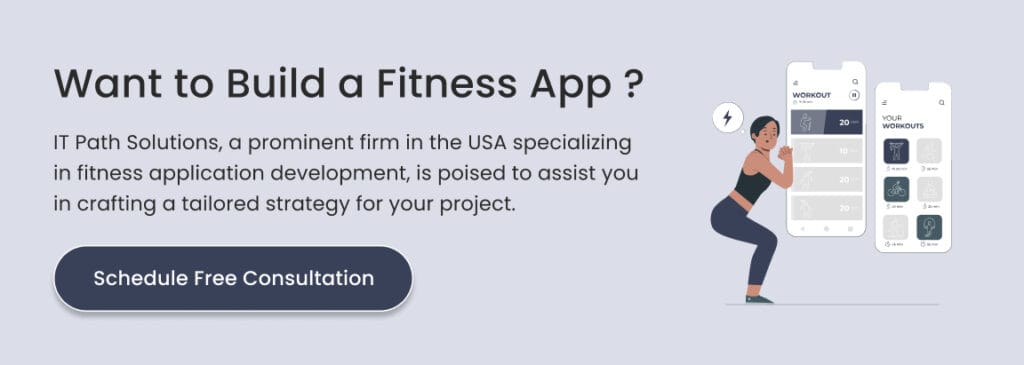How to Create a Fitness App in 2025: Steps, Features, Costs & Monetization
Keyur Patel
September 12, 2025
13 min
Fitness and strength training are lifestyles for many people. Not everyone is a professional athlete, powerlifter, or bodybuilder, but staying strong and healthy is good. Fitness apps help with time management, tracking progress, and monitoring calorie consumption. These fitness apps are not only for the people who use them but also for the companies that create them. Fitness app development is a rising trend as people are becoming more health-conscious and exploring how to keep fit and healthy.
In this guide, we have discussed everything about fitness app development so you can get a complete idea, create an effective fitness application development plan, choose the right fitness app development company, and get started. But let us begin with some market facts first.
Fitness Applications from a Market Perspective
The fitness app market is expected to generate US $6.68 billion in revenue by 2025 and US $10.04 billion by 2028 (a 9.9% CAGR between 2025 and 2028).
If you look at fitness and workout app downloading trends, Statista report suggests some of the leading mobile fitness and workout apps reached almost 14 million downloads worldwide in 2025.
These statistics prove that the fitness app development market holds immense potential. Many companies want to capitalize on this trend, but developing a fitness app is not easy.
The Play Store is full of fitness and related apps. In addition to hiring experienced developers and using cutting-edge technologies, companies must target the right audience, include the right features, and fulfill people’s expectations. This blog is a detailed guide to developing a fitness app in 2025. Let’s get started.
5 Types of Fitness Apps
Everyone’s fitness goals are different. Hence, a company must create a fitness app that resonates with its target audience. Below are five common types of fitness applications.
Goal Tracking Apps
![]()
People may think they are giving their all, but they may be slacking off in reality. Goal-tracking apps help people stay on track with their fitness goals. For example, a person may want to restrict his caloric intake to 1000 calories per day. It may change everything if he unknowingly consumes a donut in the evening. An app that monitors an individual’s calorie consumption helps him stay focused and not overeat or give in to temptations.
Such goal-tracking apps also remind a fitness enthusiast about his evening cardio session. Integrating these apps with mobiles and other smart devices enables access to real-time information, further helping in the realization of fitness goals.
Workout Guidance Apps
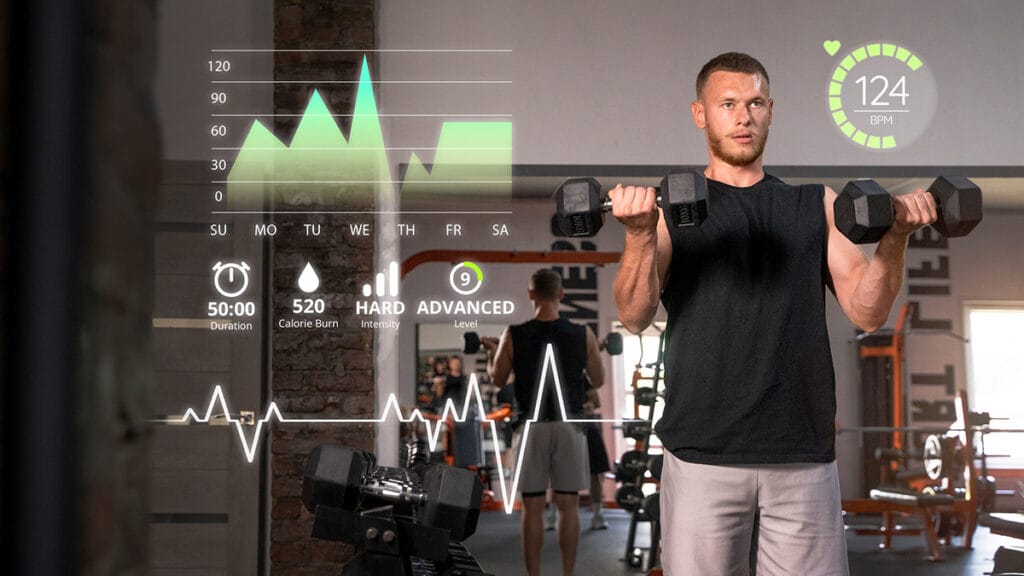
The market is flooded with fitness apps. Whether beginners or professional athletes, everyone needs guidance at some point. Workout guidance apps create workout routines for beginners, intermediates, and professionals. Individuals can enter their height, weight, and other details to get a tailored workout routine. Even if it’s a CEO with a busy schedule, the app can help a person squeeze a workout in less than 30 to 45 minutes.
Also, these apps can recommend the right music for the workout. For example, if X wants to lift heavy weights on Monday and finish the week with a CrossFit session, the app can recommend the right music. The difference in music selection may help improve performance during the workout session.
Social Media Fitness Apps
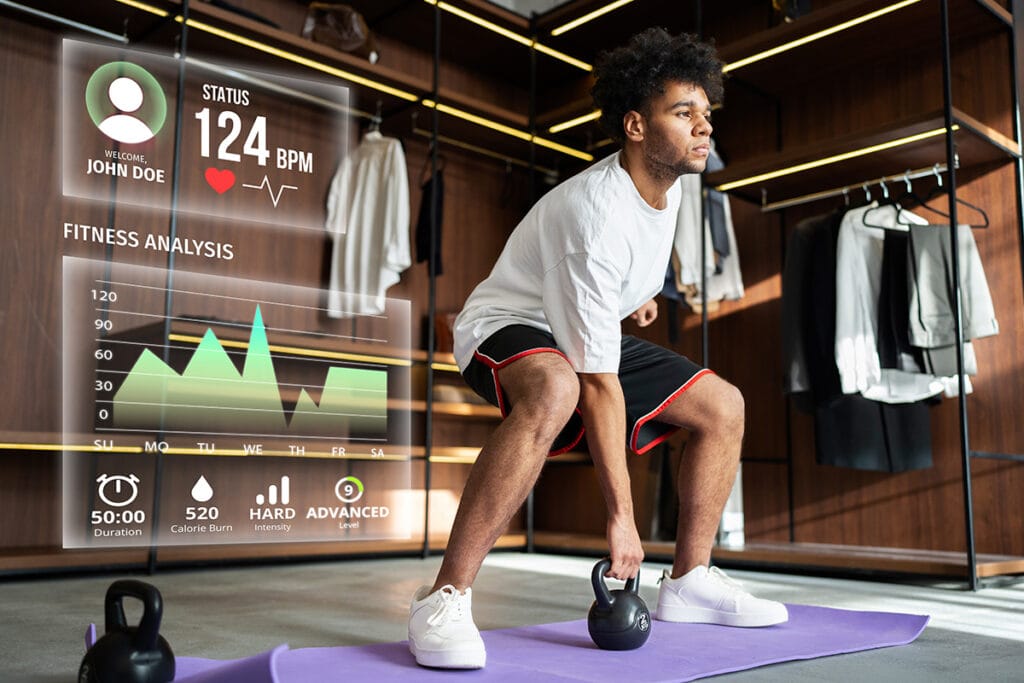
Some people like sharing their personal records and fitness experiences with others. Social media fitness apps are perfect for them. These platforms allow users to share their workout videos, routines, and other details with like-minded people online. Even fitness influencers can collaborate and create exciting videos for their viewers. Since it’s a social media-focused fitness app, users will know exactly what to expect, resulting in more engagement and participation.
Yoga and Meditation Apps
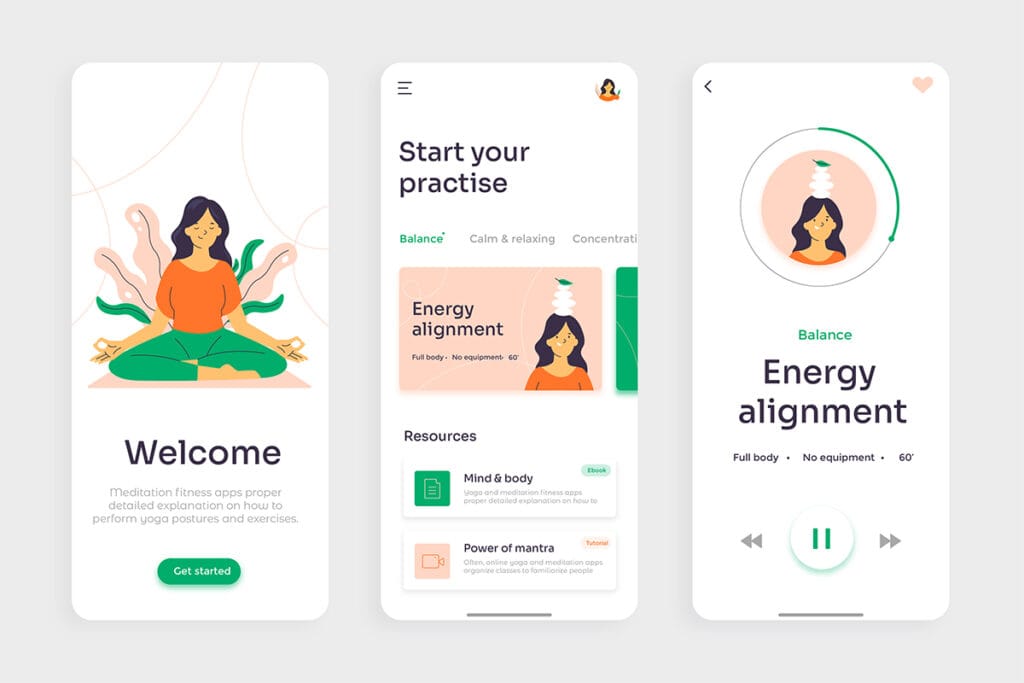
Yoga is more than stretching and breathing. Performing yoga asanas and techniques properly improves balance, flexibility, and strength in people. However, most people may not learn these techniques by watching videos and reading books. Yoga and meditation fitness apps provide proper, detailed explanations of how to perform yoga postures and exercises. Online yoga and meditation apps often organize classes to familiarize people with the exercises.
The vast library in these apps contains information, videos, and images to educate people and help them achieve their goals (be it weight loss, flexibility, or stress reduction).
Health and Wellness Apps
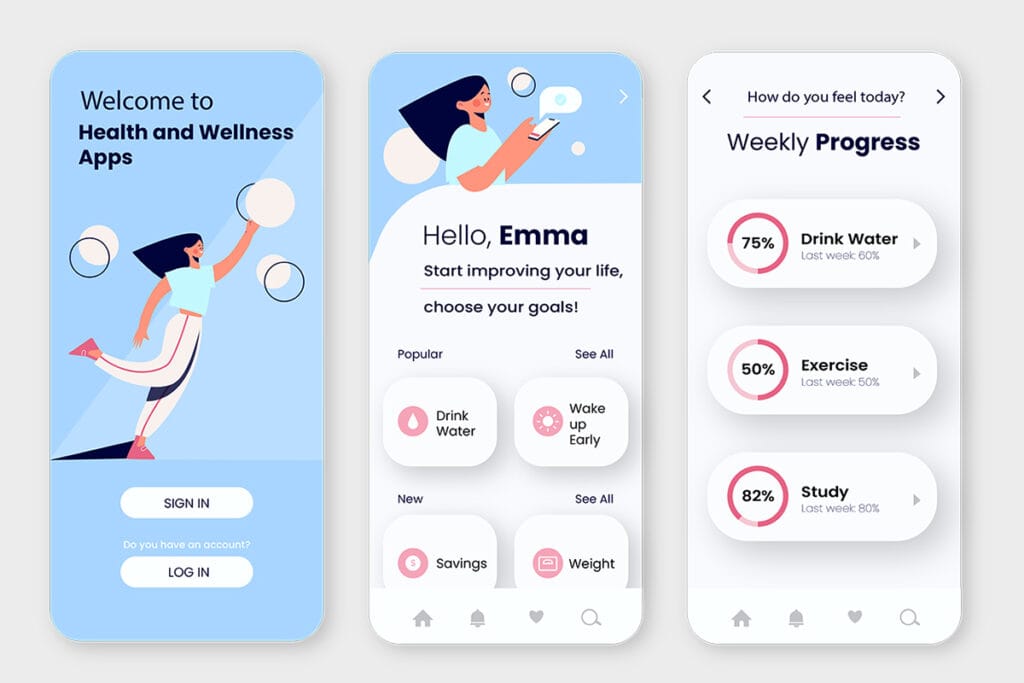
Health and wellness is a holistic approach that includes the physical, mental, emotional, and social aspects. These are primarily mobile apps that have numerous features. Men and women can get real-time information about their bodies. For example, women can get tips on what to eat during their menstrual cycle and how to manage cramps. These apps also provide valuable suggestions related to stress management while tracking sleep and hydration.
Analytical tools with customizable dashboards highlight areas for improvement. Individuals can use this data to make lifestyle changes and enhance their lives. Besides self-improvement features, health and wellness apps offer the option to chat with experts and other users. Sharing ideas and information with other people allows users to monitor their progress and improve their performance.
Must-have Features in a Fitness App
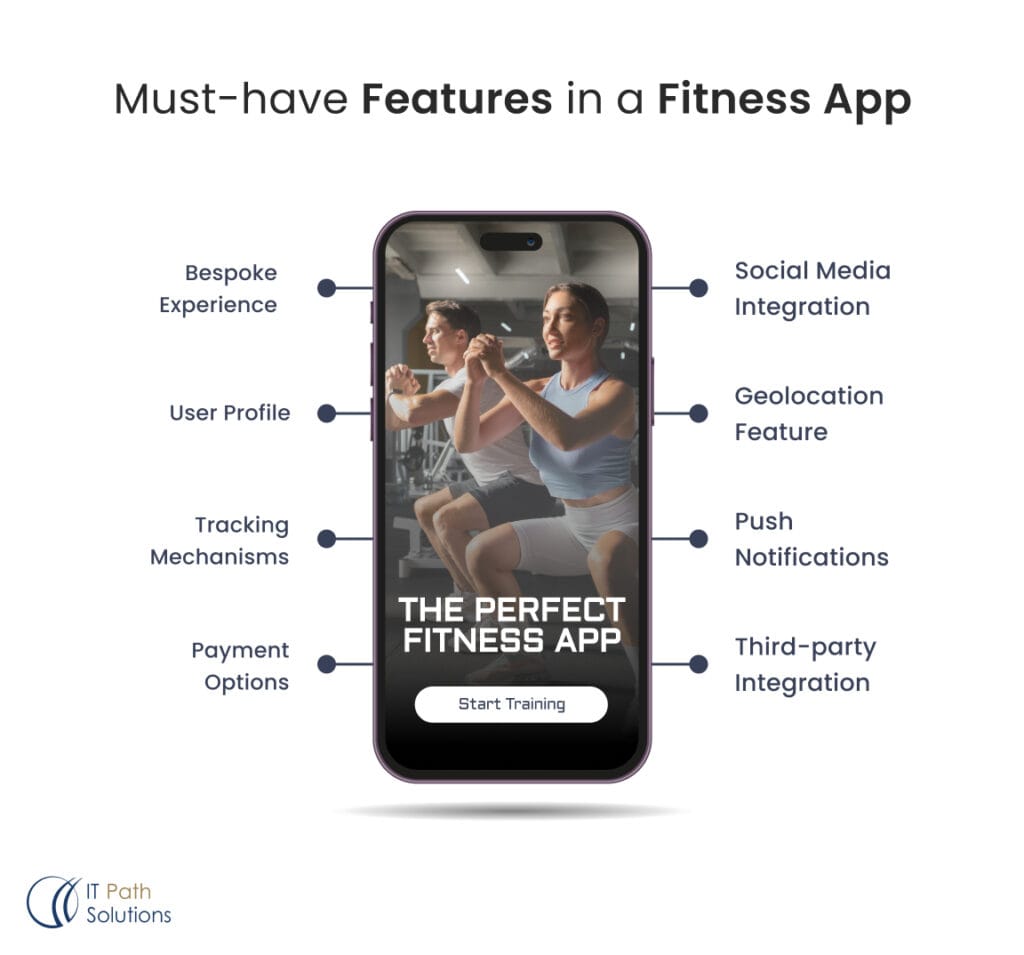
When you create a fitness app, ensure that it has the following features. There may be more, but the ones below are necessary.
Bespoke Experience
Everyone’s body is different. Hence, a cookie-cutter approach to a fitness app is a bad idea. Users must be able to avail of a personalized experience. For example, if the app provides users with a diet plan based on their height, weight, body fat composition, and other parameters, it would yield better results.
When the user logs in to the app the next time, he should be able to see the details of his last session. The app will also help users monitor their weekly/monthly/yearly progress through analytics, in addition to bespoke workout and nutritional plans.
User Profile
No user wants general information. Users wish to receive specific information that helps them achieve their goals. An app should allow users to create a user profile that includes information like their name, photo, body measurements, existing health issues, and long-term goals. The app must also allow users to modify these details over time.
Tracking Mechanisms
How would users know if they have made progress? The only way they can learn is by measuring it. The ideal fitness app must monitor the slightest changes, such as the number of reps, changes in calorie consumption, weight gain, and more. With such information, users will know where they stand. They can accordingly alter their diet plans or put in more effort to achieve better results.
Note that the app must not track unnecessary or excessive information. Tracking unnecessary information may discourage users and make them uninstall the app. It can also hamper the app’s performance, making it more sluggish. In short, the fitness app must strike the right balance to help users without ruining their user experience.
Payment Options
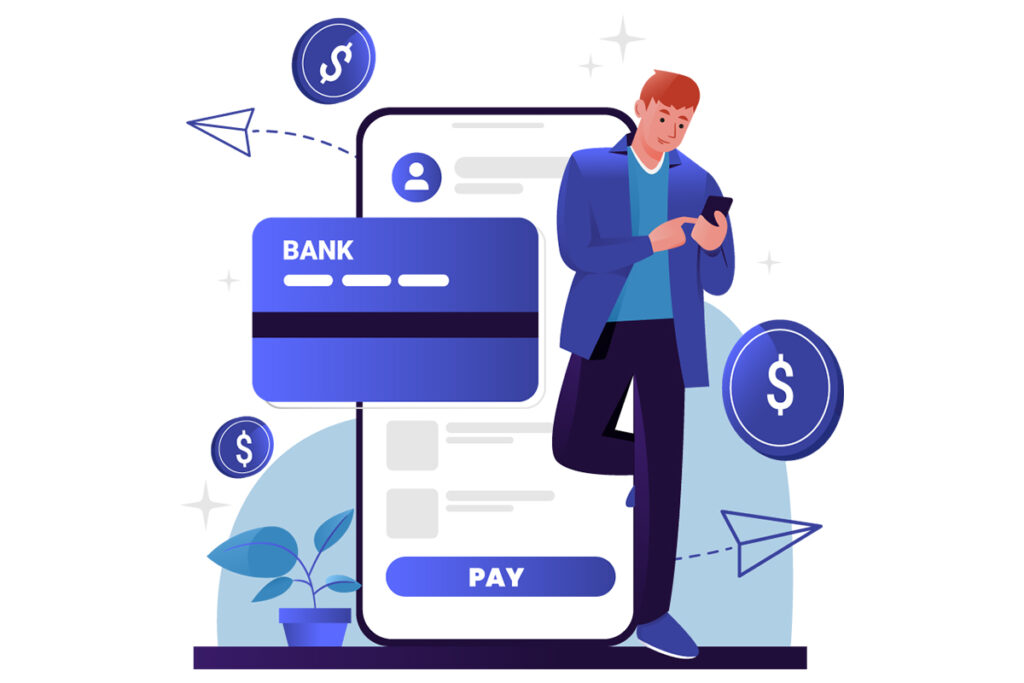
If an app offers free, premium, and other advanced plans, it must have a payment opinion. How else will users access the premium features? Fitness apps must be integrated with payment gateways like Paypal, Stripe, MasterCard, and others. Users must be able to use these options easily and choose the duration of their paid subscription.
Besides these features, the payment options must be safe. No user wants his bank details leaked or the amount wiped from his account. Companies must have robust encryption and authentication methods in place to protect users’ sensitive information.
Social Media Integration
These days, people like to highlight their achievements. Whether it’s the weight lifted in the gym, the number of km they ran, or the new shoes they purchased, users want to share every minor update on social media. Social media integration must form an integral part of the fitness app development strategy.
Getting likes and comments after sharing videos and images on social media encourages users to keep going. Most importantly, it opens up opportunities for them to become fitness influencers.
Geolocation Feature
Imagine a runner or a person enjoying an outdoor workout and wanting to quantify his efforts. The geolocation feature helps users measure the distance covered in a run and the calories burned during the session. It also enables users to track time and anticipate traffic congestion and obstacles. With these insights, the users can change their course or change their workouts. In this way, the geolocation feature enables users to get the most out of their workouts while optimizing time management.
Push Notifications
Gym life can be colorful and surprising. Many gyms organize CrossFit games, outdoor workouts, competitions, and other events. No gym addict would want to miss these events. Push notifications remind users about such events and also the exercises they perform (as a part of their routines).
Most importantly, these notifications also provide information to users about their performance. For example, if a user fails to complete 10,000 steps by evening, it tells him he has XYZ number of steps more to go. This information helps the user achieve this target for the day and ensures that he/she is on the right track.
Third-party Integration
These days, customers use multiple apps and software. A fitness app must integrate with multiple tools and software to deliver optimal results for users. For example, a fitness app named Strava integrates effectively with Spotify. This integration ensures that gymgoers can listen to their favorite music without having to switch between apps.
Similarly, a fitness app must integrate with third-party apps like food and nutrition tracking and location tracking, as well as wearables and smart devices, to ensure an enhanced user experience.
5-Step Process to Design a Fitness App
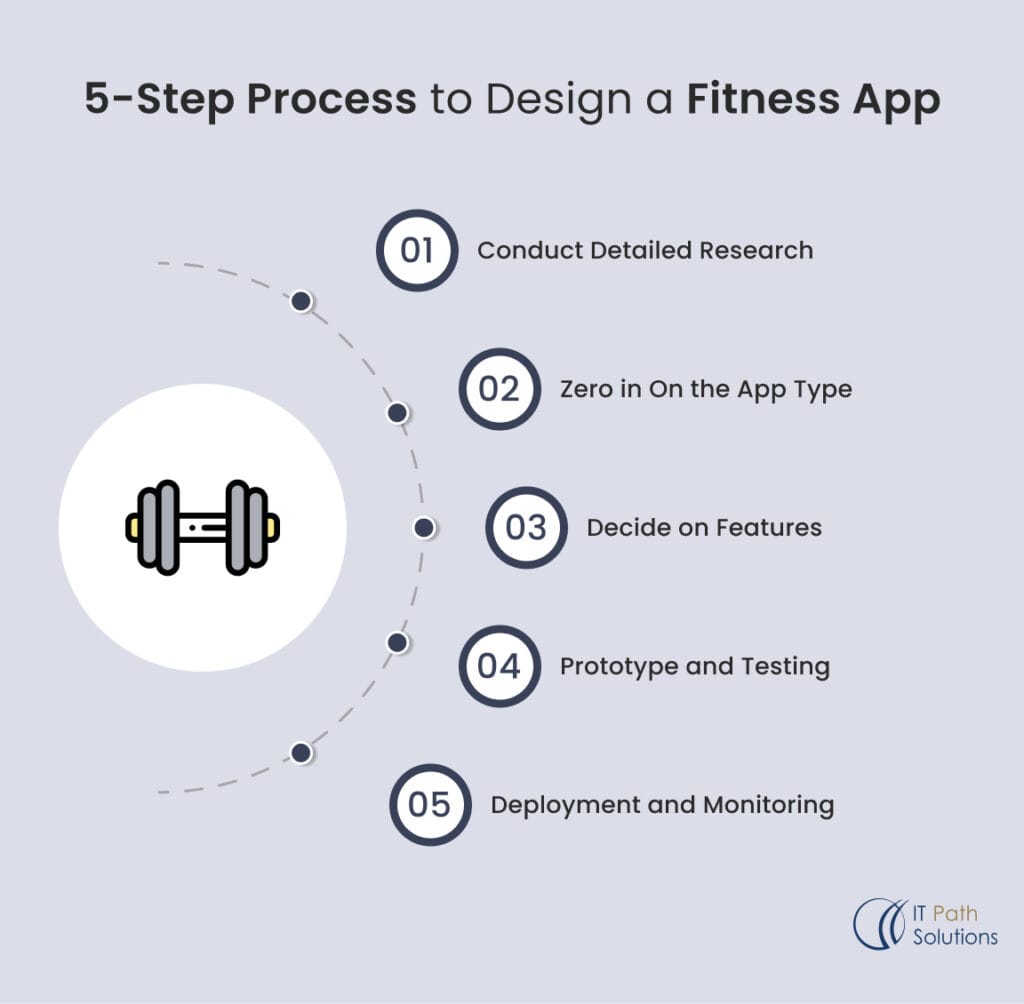
Creating a fitness app may seem challenging. However, successful companies know that it’s not rocket science. All it takes is a systematic and calculated approach. Below are 10 simple steps for fitness application development.
Conduct Detailed Research
Analyze the latest trends and customer preferences. At the same time, research your competitors and see what they do. Once you figure out your target audience, think of the ideal features to include in your app.
Zero in On the App Type
Fitness apps can be of various types, such as yoga, bodybuilding, general fitness, and more. Think of a niche market you can cater to and create an app-building strategy.
Decide on Features
Understand your user needs and include features in your app that help solve their problems. Consider aspects like UI, ease of registration, integration, push notifications, and social media integration to create a killer app.
Prototype and Testing
IoS or Android is often the dilemma. It is advisable to create a product with the basic features and have it tested by a few select people (the target audience). You can roll out the full version after getting their approval and ironing out the flaws.
Deployment and Monitoring
The final step is to create the app, conduct testing, and add the finishing touches. Now, it is okay to launch the product. The responsibility of fitness app development doesn’t end after deployment. It is crucial to monitor the app’s performance, fix bugs, and optimize it further based on customer feedback.
Cost of Building a Fitness App
The cost of developing a fitness app depends on many factors. Suggesting a ballpark figure is tricky because every company is different. Also, we must understand that the cost of fitness mobile app development can change significantly from ideation to launch date. A lot of things may change over time, and the cost may rise. Below are some of the main costs associated with fitness app development.
- UX and UI of the fitness app
- Type of fitness app
- Number of features
- Complexity of the app
- Chosen platform (IoS or Android)
- In-house team or outsourced development
- Market research and business analysis
10 Mistakes to Avoid During Fitness App Development
As seen above, fitness app development is a reasonably complex process. It is unwise to hurry through the process or jump on it because others are doing it. On the other hand, companies should not stretch the process too long because it would shoot up development and other costs. The following are the mistakes that companies must avoid when creating a fitness app.
- Ignoring market research
- Too many features
- Not prioritizing UX/UI design
- No customization
- Poor security
- Not engaging with the target audience
- Zero testing
- The absence of a robust marketing strategy
- Trusting an inexperienced development team
Monetization Strategies for Fitness App
Fitness app monetization is crucial; you must create strategies to keep your initiative thriving. There are various ways through which you can monetize your fitness app. Fitness apps can earn money through crowdfunding, sponsorships, in-app purchases, and many other ways. Let’s take a look at some prominent fitness app monetization strategies.
In-app advertising
It’s the most common monetization model for fitness apps, where developers or fitness app owners monetize the app by displaying ads within it at specific intervals.
User Data Monetization
Fitness app owners can monetize their products by selling users’ data to third-party businesses. However, they must obtain permission from their users or act according to local regulations.
Subscriptions
Fitness applications can help you monetize your app by providing some subscription-based services.
Freemium
Fitness applications can make money by allowing users to upgrade to freemium services for a fee.
These are some of the basic monetization strategies for fitness apps. You can deploy more depending on the location and monetization options available there.
Final Thoughts
The fitness app development market is highly competitive, and companies should leave no room for error. With so many choices on the app store, it won’t take a minute for users to uninstall an app. Hence, it makes sense to adopt a calculated approach to fitness app development. It is crucial to conduct comprehensive market research, understand your target audience, and then embark on fitness app development.
Launch Your Own Fitness App with confidence by following a strategic plan. We hope this quick guide will help you navigate the tricky waters of fitness app development. If you lack the resources to develop a fitness app, consider hiring a professional app development firm. Don’t try to do everything yourself. At the same time, don’t try to save money by choosing a less experienced development team.
You may end up spending more than you originally planned. There is no point in spending tens of thousands of dollars on creating a fitness app, making mistakes, and starting from zero. Read case studies of successful fitness app launches for more clarity.
Keyur Patel
Co-Founder
Keyur Patel is the director at IT Path Solutions, where he helps businesses develop scalable applications. With his extensive experience and visionary approach, he leads the team to create futuristic solutions. Keyur Patel has exceptional leadership skills and technical expertise in Node.js, .Net, React.js, AI/ML, and PHP frameworks. His dedication to driving digital transformation makes him an invaluable asset to the company.
Get in Touch
Search
Blog Categories
